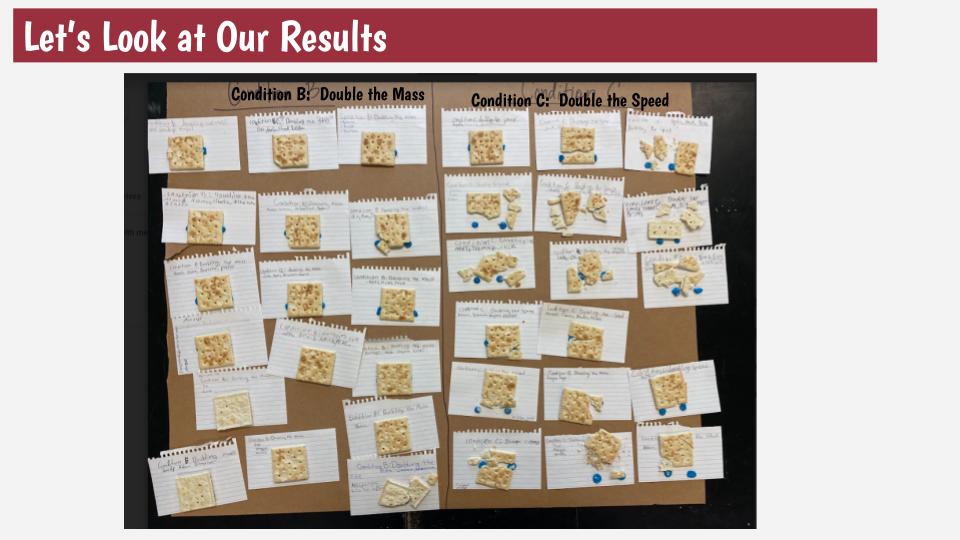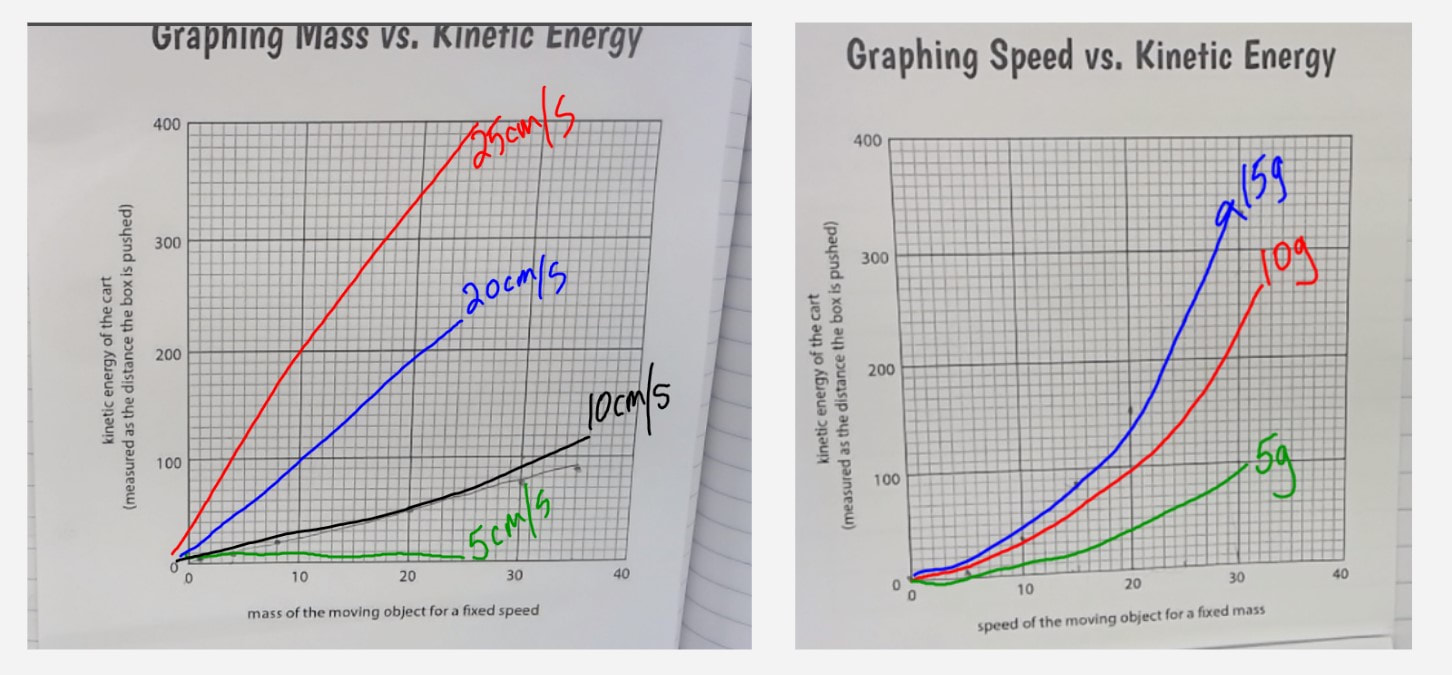It's clear that when there's more speed or mass in a collision that there is more energy in the system. We're not sure, however, which makes more of an impact--speed or mass. So we set up our investigations again, this time slamming our carts into something fragile--a saltine cracker! We then compared the qualitative results, and it was obvious!
We then realized that while our qualitative results were helpful, we needed some quantitative data, too! Using a simulator , students recorded data were both speed and mass were changed accordingly. We graphed the data the class collected to create two comparable situations:
With lots of thoughtful discussion, students came to the following conclusion:
1. While both mass and speed increase the energy in a system, speed seems to make more of an impact.
2. If you double the mass in a system, the kinetic energy doubles. If you triple the mass in a system, the KE triples. It's like a 1-1 situation!
3. If you double the speed in a system, it makes more than double the KE in a system. In fact, it's quadrupled! And if you triple the speed, the KE ends up being 9x the original!
1. While both mass and speed increase the energy in a system, speed seems to make more of an impact.
2. If you double the mass in a system, the kinetic energy doubles. If you triple the mass in a system, the KE triples. It's like a 1-1 situation!
3. If you double the speed in a system, it makes more than double the KE in a system. In fact, it's quadrupled! And if you triple the speed, the KE ends up being 9x the original!


 RSS Feed
RSS Feed